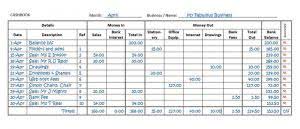
By not reflecting the current market value of assets, financial statements may not provide an accurate picture of a company’s financial health. This can be particularly misleading for investors and other stakeholders who rely on these statements to make informed decisions. For instance, a company with significant real estate holdings may appear less valuable on paper if those assets are recorded at their historical cost rather than their current market value. The Cost Principle also offers a faithful representation of a company’s financial position. By recording assets at their original cost, the principle reflects the actual resources acquired by the entity.

What Is Historical Cost Principle?

However, the cost principle’s emphasis on historical cost can sometimes obscure the true economic value of a company’s assets. For instance, in industries where technological advancements are rapid, the book value of equipment and machinery may significantly differ from their current market value. This discrepancy can lead to an understatement of a company’s asset base, potentially affecting key financial ratios and metrics used by investors and analysts to assess the company’s performance. For example, the return on assets (ROA) ratio might appear more favorable if the assets are undervalued, giving a skewed impression of efficiency. The cost principle requires you to initially record an asset, liability, or equity investment at its original acquisition cost.

Stay up to date on the latest accounting tips and training
- Overall, the advantages of the Cost Principle include objectivity, simplicity, faithful representation of assets, consistency, and transparency.
- It provides a clear and straightforward method for recording transactions, which is particularly beneficial for small businesses and organizations with limited accounting resources.
- In this case, despite the depreciating effects of using a fixed asset and the potential increase in the machine brand’s value due to inflation, its historical cost remains the original purchase price of $20,000.
- Fair value accounting, on the other hand, aims to provide a more accurate reflection of an asset’s current worth.
- If a manufacturing company buys machinery for $50,000, the cost principle mandates recording the machinery at its original cost of $50,000 on the balance sheet.
- Understanding this principle is crucial for anyone involved in financial reporting or analysis because it impacts how companies present their financial health and stability to stakeholders.
Appreciation of an asset occurs when the value of the asset increases. When reviewing the worth of assets, appreciation is treated as a gain. The difference of the asset’s current worth and the original cost is recorded as a “revaluation cost principle surplus.” This can add net worth to a business over time if assets continue to appreciate. When you’re starting to dive into accounting, you’ll come across an entire glossary of terms.
205-16 Gains and losses on disposition or impairment of depreciable property or other capital assets.
It ensures that financial statements provide a faithful representation of a company’s assets at the time of acquisition. It also allows for consistent treatment of assets and facilitates trend analysis and performance evaluation over time. These examples demonstrate how the Cost Principle influences the valuation and recognition of assets, expenses, and business combinations. By adhering to the principle, financial statements provide a reliable and objective representation of a company’s financial position, ensuring consistency and comparability for stakeholders. One key area where the Cost Principle is applied is the valuation of assets.
- Investors want to put their money into a business that will help them earn their money back.
- In this case, the company would record the cost of the new vehicle as the amount paid in cash plus the cash value of the trade-in vehicle.
- The income statement is also affected by the historical cost principle.
- Over time, the cost principle has evolved to become a cornerstone of accounting.
- If your company has any valuable logos or brand names, you wouldn’t be able to reflect their asset value on your balance sheet.
- Here’s everything you should know about the cost principle, as well as how to use it for your business.
As such, one cannot get a fair market value for the company by calculating the historical cost of its assets and liabilities. While the cost principle provides consistency and objectivity, it does have some limitations. The main issue is that it may not always reflect the true current value of an asset. For businesses that hold long-term assets that appreciate in value, such as real estate, the cost principle can result in assets being undervalued on the balance sheet. Understanding the cost principle is essential for grasping how businesses record and report their financial transactions. This principle is key to ensuring consistency and reliability contribution margin in financial statements, as it requires assets to be logged at their original purchase costs.
Historical Cost vs. Fair Value

In these cases, investors may be more interested in a company’s book value than its market value. For example, in industries where there is rapid technological change, the Cost Principle may not https://www.bookstime.com/articles/contribution-margin-ratio accurately reflect a company’s true value. This is because the market value of a company’s assets may be higher than their book value.